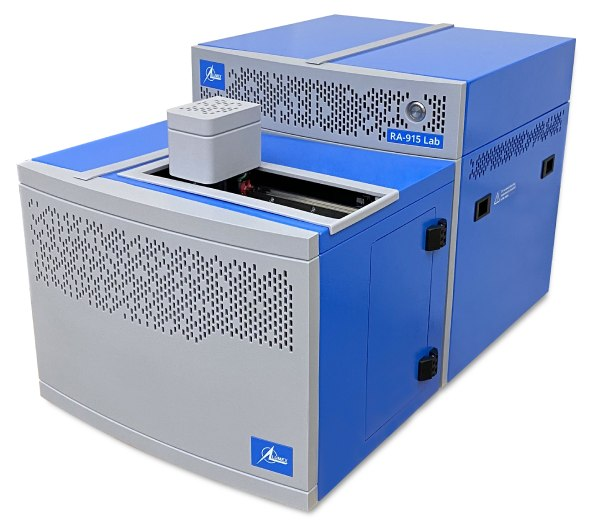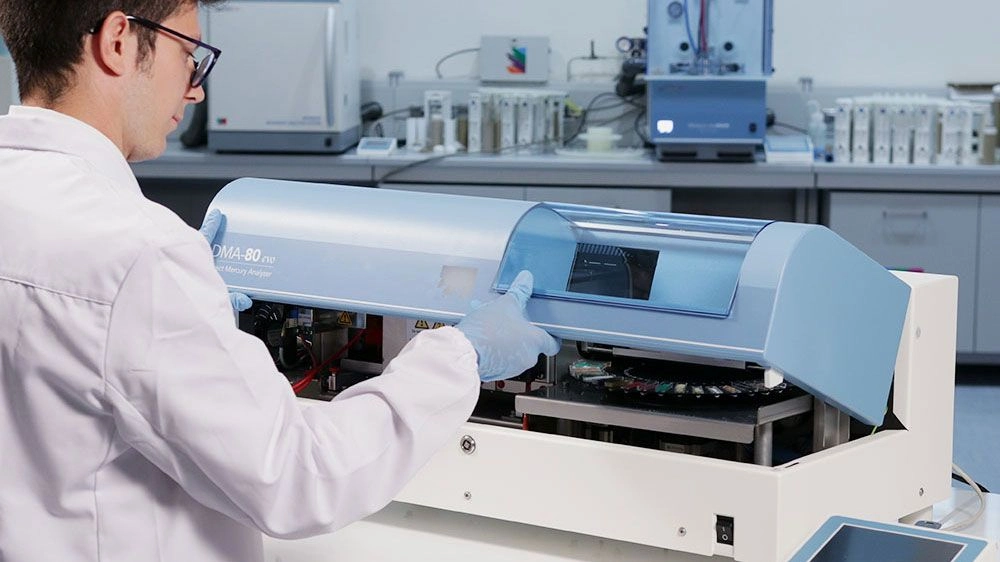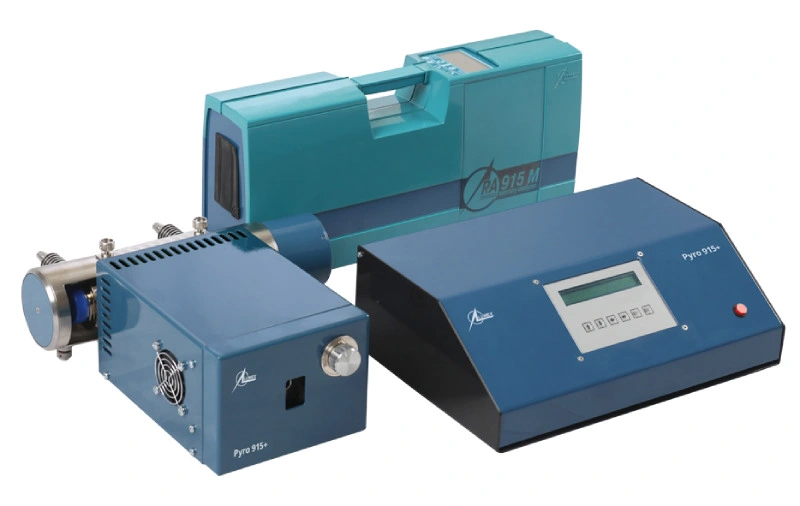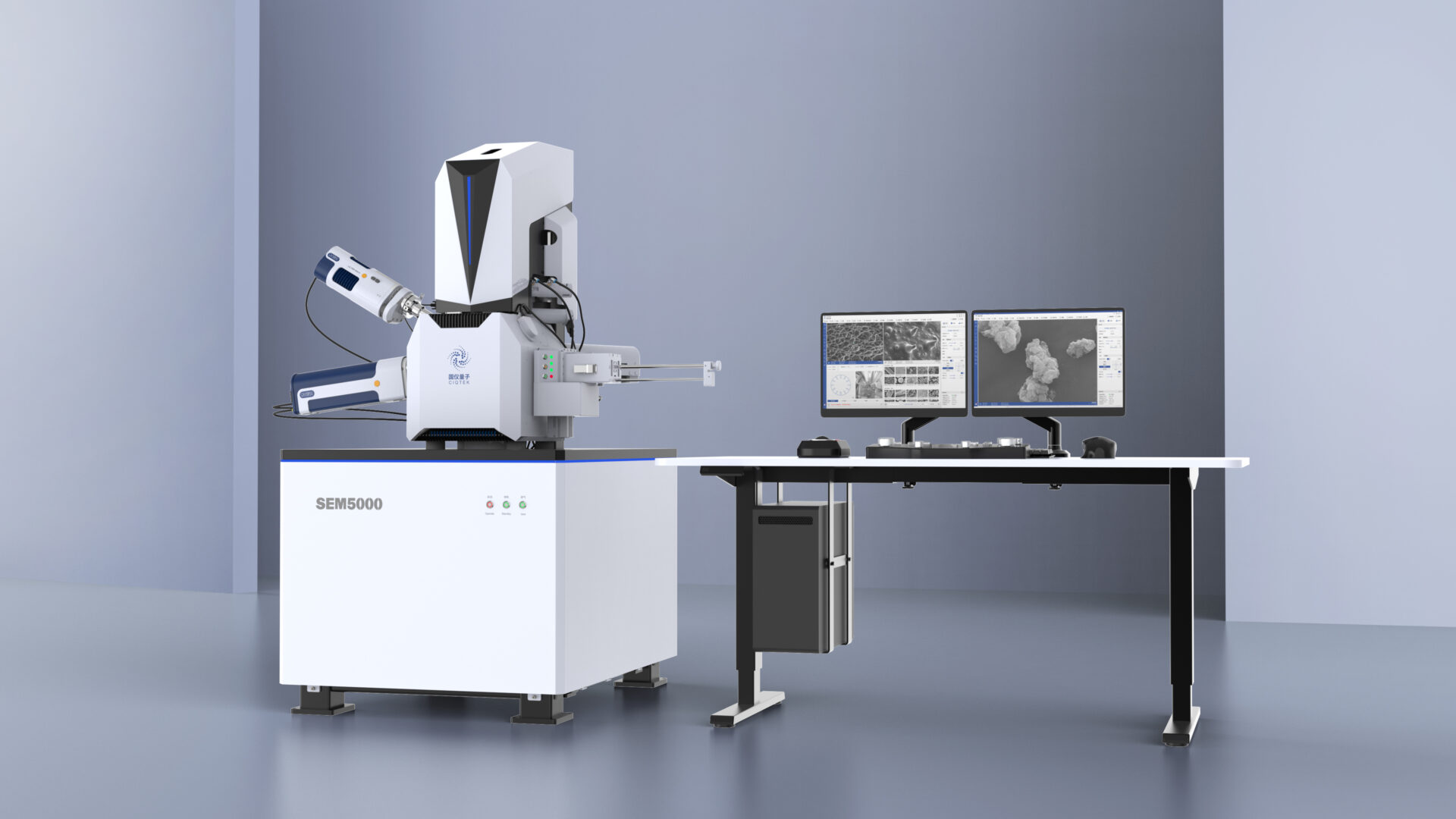Introduction
Mercury (Hg) is one of the most toxic elements known to science — persistent, bio accumulative, and capable of causing serious harm to human health and the environment. From industrial waste to environmental monitoring, accurate mercury detection is not just a scientific necessity but a regulatory requirement worldwide.
To meet this need, the Laboratory Mercury Analyzer has become an indispensable instrument across industries and research institutions. It enables precise measurement of mercury concentrations in solids, liquids, and gases — providing fast, reliable data that supports environmental protection, industrial quality assurance, and scientific discovery.
This article explores in depth the importance, working principle, industrial applications, and research laboratory uses of modern mercury analyzers.

What is a Laboratory Mercury Analyzer?
A Mercury Analyzer is a high-precision instrument designed to measure mercury concentration in various types of samples — including environmental, industrial, and biological materials.
Mercury analyzers are based on the principle of atomic absorption spectroscopy (AAS) or atomic fluorescence spectroscopy (AFS). They can detect mercury at ultra-trace levels (nanograms or even picograms) without complex sample preparation.
Why Mercury Analysis Matters
Mercury contamination is a global issue due to:
- Industrial emissions and wastewater discharge.
- Combustion of fossil fuels (especially coal).
- Mining and metallurgical activities.
- Improper disposal of electronic waste.
- Bioaccumulation in aquatic ecosystems.
Accurate mercury measurement is critical for:
- Environmental monitoring
- Public health protection
- Regulatory compliance
- Process optimization in industries
Working Principle of a Mercury Analyzer
Overview
Most laboratory mercury analyzers operate using cold vapor atomic absorption spectroscopy (CVAAS) or cold vapor atomic fluorescence spectroscopy (CVAFS) techniques.
Both methods rely on converting mercury in a sample into elemental (gaseous) mercury vapor, which is then measured based on its interaction with light.
Step-by-Step Process
- Sample Introduction: The liquid or solid sample is placed in the analyzer or connected via an auto-sampler.
- Thermal Decomposition / Digestion: The sample is either thermally decomposed or chemically digested to release mercury.
- Reduction to Elemental Mercury: A reducing agent (often stannous chloride, SnCl₂) converts ionic mercury (Hg²⁺) to elemental mercury vapor (Hg⁰).
- Carrier Gas Transport: The mercury vapor is carried by an inert gas (usually argon) into an optical cell.
- Measurement:
- In CVAAS, mercury atoms absorb UV light at 253.7 nm.
- In CVAFS, they emit fluorescent light after excitation, providing higher sensitivity.
- Data Processing: The analyzer’s software quantifies mercury concentration based on signal intensity, displaying results in nanograms per liter (ng/L) or micrograms per kilogram (µg/kg).
Detection Limits
Modern mercury analyzers can detect concentrations as low as:
- 0.001 ng (1 picogram) for advanced research systems.
- Typically below 0.1 ng/L for environmental water samples.

Types of Mercury Analyzers
Mercury analyzers vary based on application and measurement technique. The main types include:
| Type | Measurement Principle | Common Use |
| CVAAS (Cold Vapor Atomic Absorption) | Absorption of UV light by mercury atoms | Industrial and environmental labs |
| CVAFS (Cold Vapor Atomic Fluorescence) | Fluorescence emitted after excitation | Ultra-trace analysis, research labs |
| Thermal Decomposition–Amalgamation–AAS | Direct solid analysis without digestion | Solid samples (coal, soil, waste) |
| Online Continuous Mercury Monitors | Automated sampling and measurement | Industrial emission control, flue gas monitoring |
Industrial Uses and Applications of Mercury Analyzers
Mercury analyzers play a vital role in industrial quality control, environmental safety, and regulatory compliance. Below are the main sectors that rely on this technology.
Environmental Monitoring and Compliance
Industries must comply with stringent global regulations — such as US EPA Method 7473, 245.7, and 1631, EN 1483, and ISO 17852 — which mandate regular mercury monitoring in air, water, soil, and waste.
Mercury analyzers enable:
- Testing of wastewater and effluents before discharge.
- Monitoring of air emissions from chimneys, boilers, and incinerators.
- Soil and sediment analysis near mining or industrial sites.
- Verification of cleanup efficiency during remediation projects.
This ensures environmental safety and helps companies maintain compliance with environmental protection agencies and ISO standards.
Coal-Fired Power Plants and Energy Sector
Coal combustion is a significant source of mercury emissions. Power plants use mercury analyzers for:
- Measuring mercury in coal, fly ash, and flue gases.
- Evaluating mercury removal efficiency of scrubbers and filters.
- Ensuring compliance with emission regulations (e.g., EPA Mercury and Air Toxics Standards).
Portable or online mercury analyzers are often integrated directly into stack emission monitoring systems (CEMS) for continuous measurements.
Petrochemical and Refining Industries
Mercury is naturally present in crude oil and natural gas. Even trace amounts can cause:
- Catalyst poisoning in refinery processes.
- Corrosion in pipelines and equipment.
- Product contamination in fuels or petrochemicals.
Mercury analyzers are used to:
- Test feedstock, condensates, and natural gas.
- Control mercury removal units (MRUs).
- Monitor process water and wastewater.
Accurate detection prevents equipment damage and ensures compliance with environmental and safety regulations.
Mining and Metallurgical Applications
In mining and smelting operations, mercury analyzers help:
- Monitor ore, slag, and tailings for mercury content.
- Assess occupational exposure in gold extraction or amalgamation processes.
- Test wastewater and effluent streams from mining sites.
Such monitoring protects workers and prevents environmental contamination near mining areas.
Waste Management and Recycling
Mercury-containing wastes include:
- Batteries, fluorescent lamps, switches, thermometers, and electronic scrap.
- Industrial sludges and incinerator residues.
Mercury analyzers determine:
- Mercury levels in solid waste and ash before disposal.
- Recycling efficiency in recovery facilities.
- Emissions from waste incineration plants.
Through such measurements, industries meet hazardous waste disposal standards and minimize toxic emissions.
Food and Pharmaceutical Industries
Mercury contamination can enter the food chain through seafood, grains, or medicinal products. Laboratories and regulatory agencies use mercury analyzers to:
- Measure mercury in fish, shellfish, and meat products.
- Ensure pharmaceutical raw materials and supplements are mercury-free.
- Support toxicology testing and safety compliance.
Cement and Building Materials Industry
Cement kilns can emit mercury when processing raw materials containing trace mercury compounds.
Mercury analyzers help:
- Measure mercury in limestone, clinker, and exhaust gases.
- Track emissions and evaluate mercury control technologies.
- Ensure compliance with industrial emission directives.

Applications of Mercury Analyzers in Research Laboratories
Mercury analyzers are equally important in academic and institutional research. They allow scientists to understand mercury’s behavior, environmental cycling, and toxicological effects.
Environmental and Geochemical Research
Universities and research institutes use mercury analyzers for:
- Studying mercury transport and transformation in soil, water, and atmosphere.
- Analyzing sediment cores to trace historical mercury pollution.
- Measuring bioaccumulation in fish, plants, and wildlife.
- Supporting climate and environmental models that assess mercury cycling globally.
Analytical Chemistry and Instrumentation Studies
Mercury analyzers serve as excellent tools for:
- Developing and validating new analytical methods.
- Comparing spectroscopic techniques (AAS vs AFS).
- Teaching students about atomic spectroscopy principles and trace analysis methods.
Research labs often use these instruments to test new pre-concentration techniques, detectors, or sampling methods for ultra-trace mercury detection.
Toxicology and Biomedical Studies
In medical and toxicological research, mercury analyzers measure:
- Mercury levels in blood, urine, hair, or tissues.
- Human exposure to methylmercury from diet or environment.
- Mercury accumulation in experimental models (plants, cells, or animals).
Such studies provide essential data for public health assessments and regulatory policy development.
Industrial R&D and Material Testing
Research laboratories within industries use mercury analyzers to:
- Evaluate catalysts and adsorbents for mercury removal.
- Study corrosion behavior in petroleum systems.
- Test new sensor materials for environmental applications.
By understanding mercury behavior at the molecular level, R&D centers design more efficient pollution control and remediation technologies.
Key Features and Benefits of Modern Mercury Analyzers
| Feature | Benefit |
| Direct solid/liquid analysis | Eliminates need for wet chemistry digestion |
| Ultra-low detection limits | Enables trace mercury analysis in all matrices |
| Fully automated operation | High throughput and consistent accuracy |
| Wide measurement range | Suitable for ultra-trace to high-concentration samples |
| Integrated software | Real-time data acquisition, calibration, and reporting |
| Compliance with global standards | Meets EPA, ISO, ASTM, and EN requirements |
| Compact design and low maintenance | Ideal for both field and laboratory environments |
Comparison: CVAAS vs. CVAFS Mercury Analyzers
| Parameter | CVAAS (Absorption) | CVAFS (Fluorescence) |
| Sensitivity | Moderate (ng/L range) | Very high (pg/L range) |
| Selectivity | High | Very high |
| Complexity | Simpler setup | More advanced optics |
| Cost | Moderate | Higher |
| Typical Use | Industrial and routine analysis | Research and ultra-trace detection |
Both techniques provide accurate results, but CVAFS is preferred for research laboratories requiring sub-nanogram sensitivity, while CVAAS is often used in industrial and environmental monitoring for its robustness and simplicity.

Integration with Quality Control and Automation Systems
Modern mercury analyzers can be linked to Laboratory Information Management Systems (LIMS) or industrial process control networks, enabling:
- Automated data collection and reporting.
- Remote diagnostics and performance monitoring.
- Real-time feedback for emission control systems.
- Enhanced traceability and regulatory documentation.
This integration supports smart factory and digital laboratory frameworks aligned with Industry 4.0 principles.
Safety and Maintenance Considerations
Mercury analysis requires strict safety measures:
- Use closed analytical systems to avoid vapor exposure.
- Implement activated carbon traps or scrubbers for exhaust gases.
- Regularly clean the amalgamation cell and optical windows.
- Calibrate with certified mercury standards for reliable data.
Routine preventive maintenance ensures stable performance and long instrument lifespan.

The Future of Mercury Analysis Technology
Advancements in mercury analyzers are focused on improving speed, sensitivity, and sustainability:
- Nanotechnology-based sensors for real-time field detection.
- Automated calibration and AI diagnostics for error-free operation.
- Portable, battery-powered analyzers for environmental fieldwork.
- Multi-element analyzers combining mercury detection with arsenic or lead analysis.
The future of mercury analysis is moving toward smarter, faster, and greener technologies—making mercury monitoring more accessible and efficient worldwide.
 Conclusion:
Conclusion:
The Laboratory Mercury Analyzer is more than an analytical instrument — it is a critical safeguard for environmental health, industrial integrity, and scientific research.
In industrial settings, it ensures compliance with emission standards, protects equipment from contamination, and upholds environmental responsibility.
In research laboratories, it enables the discovery of new materials, supports toxicological studies, and deepens our understanding of mercury’s global cycle.
As industries strive for sustainability and cleaner technologies, mercury analyzers will continue to play a central role in maintaining the delicate balance between progress and planetary protection.
Frequently Asked Questions (FAQs) About Laboratory Mercury Analyzers
- What is a Laboratory Mercury Analyzer?
A Laboratory Mercury Analyzer is a precision instrument designed to detect and quantify mercury (Hg) in various samples — such as air, water, soil, biological materials, or industrial products — using atomic absorption or fluorescence spectroscopy.
- How does a mercury analyzer work?
Mercury analyzers typically use Cold Vapor Atomic Absorption (CVAAS) or Cold Vapor Atomic Fluorescence (CVAFS) methods. Mercury in a sample is converted to vapor, carried into an optical cell, and its concentration is determined by measuring how it absorbs or emits light at a wavelength of 253.7 nm.
- What types of samples can be analyzed for mercury?
Mercury analyzers can handle solids, liquids, and gases. Common examples include:
- Water, wastewater, and sludge
- Soil and sediment
- Coal, ash, and ores
- Petroleum products and natural gas
- Food and biological samples
- What is the main principle behind mercury analysis?
The principle is based on measuring elemental mercury vapor produced from a sample after reduction or thermal decomposition. The amount of light absorbed or emitted by the vapor corresponds to the mercury concentration.
- What detection methods are commonly used in mercury analyzers?
The main detection techniques are:
- CVAAS – Cold Vapor Atomic Absorption Spectroscopy
- CVAFS – Cold Vapor Atomic Fluorescence Spectroscopy
- Thermal Decomposition–Amalgamation–AAS – Direct solid analysis
- What are the detection limits of modern mercury analyzers?
High-end mercury analyzers can detect mercury concentrations as low as 0.001 nanograms (1 picogram), depending on the model and analysis method.
- Why is mercury analysis important in industries?
Industries use mercury analyzers to:
- Monitor emissions and effluents
- Ensure compliance with environmental regulations
- Prevent equipment corrosion or catalyst poisoning
- Guarantee product safety and quality control
- What are the most common industrial applications of mercury analyzers?
- Coal-fired power plants (flue gas and ash testing)
- Petrochemical and natural gas industries
- Mining and metallurgical operations
- Waste management and recycling
- Cement and building materials industries
- How are mercury analyzers used in research laboratories?
In research, mercury analyzers are used to:
- Study environmental contamination and transport
- Analyze bioaccumulation in ecosystems
- Measure mercury in biological and toxicological samples
- Develop new analytical and remediation methods
- What is the difference between CVAAS and CVAFS?
| Feature | CVAAS | CVAFS |
| Technique | Absorption of UV light | Emission of fluorescent light |
| Sensitivity | High | Very high (better for trace detection) |
| Typical Use | Industrial and routine labs | Research and ultra-trace studies |
- Do mercury analyzers require sample digestion?
Some analyzers require chemical digestion using acids and reducing agents, while direct mercury analyzers use thermal decomposition and amalgamation, eliminating the need for wet chemistry.
- What standards or methods are used for mercury testing?
Mercury analysis follows internationally recognized standards such as:
- US EPA Methods 245.7, 7473, and 1631
- EN 1483
- ISO 17852
- ASTM D7623
- Can mercury analyzers be used in the field?
Yes. Portable mercury analyzers and continuous emission monitors (CEMs) are designed for on-site testing in industrial environments, environmental surveys, and emergency response.
- How long does a mercury analysis take?
Depending on the method and sample type, a mercury analysis can take from a few minutes (for direct analysis) to 30 minutes (for complex digestion methods).
- What industries are required to monitor mercury levels?
Mandatory mercury monitoring applies to:
- Power generation (coal plants)
- Oil & gas refining
- Mining and metallurgy
- Waste incineration
- Cement manufacturing
- Chemical and pharmaceutical production
- How does a mercury analyzer help protect the environment?
By measuring and controlling mercury emissions and discharges, mercury analyzers help industries prevent pollution, protect ecosystems, and comply with environmental legislation like the Minamata Convention on Mercury.
- How is mercury measured in biological samples like fish or human tissue?
Samples are digested with acids or thermally decomposed, and the released mercury vapor is measured using CVAFS or CVAAS. This is common in food safety, environmental health, and toxicology research.
- What maintenance does a mercury analyzer require?
Routine maintenance includes:
- Cleaning sample cells and optical components
- Checking carrier gas lines and filters
- Calibrating with certified standards
- Replacing amalgamation tubes or catalysts periodically
Proper maintenance ensures stable operation and accurate results.
- What are the key benefits of using a laboratory mercury analyzer?
- High sensitivity for trace analysis
- Fast and automated operation
- Minimal sample preparation
- Multi-matrix capability (liquids, solids, gases)
- Compliance with global analytical standards
- What are the future trends in mercury analysis technology?
Emerging innovations include:
- AI-assisted calibration and diagnostics
- Miniaturized portable analyzers
- Cloud-based data integration
- Combined multi-element analyzers for mercury, arsenic, and lead
- Green analytical technologies reducing reagent use
Pro Tip:
When selecting a mercury analyzer, consider the sample type, detection limit, throughput, and compliance standards relevant to your application. Choosing the right system ensures accurate results and long-term reliability in both industrial and research environments.
Contact our experts for personalized equipment guidance, training, and SOP support.
Contact:
Email: sales@apex-instrument.com
Mobile/WhatsApp: +971526191767



